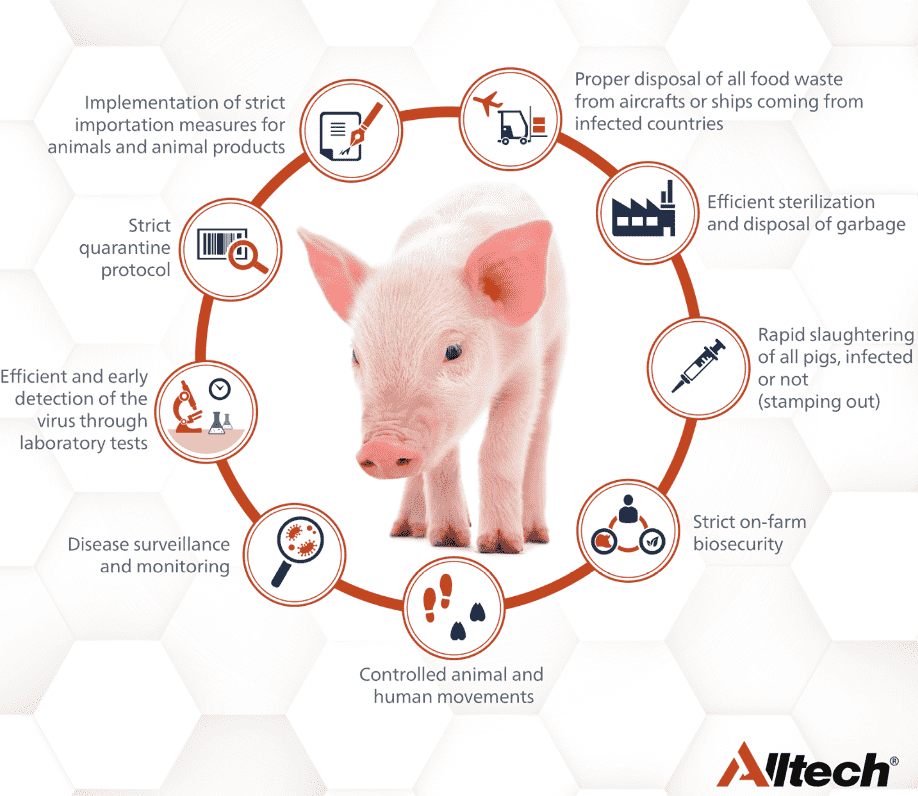African swine fever
African swine fever (ASF) is a highly contagious and deadly disease that affects domestic and wild pigs regardless of age or sex. ASF cannot be spread to humans or other non-swine animals and livestock and is not a threat to human health. However, humans can carry the virus on their clothing, shoes and equipment and can spread the disease unknowingly.
Why should we pay attention to feed biosecurity?
Dr. Dee from Pipestone Veterinary Services and Kansas State University conducted a transboundary study that demonstrated the survival of some viruses in feed and feed materials in 2018. The results showed that viruses, including ASF, survived in a variety of feed materials, such as soybean meal, lysine, choline, etc. Therefore, feed, as a possible infectious source and a way to transmit the disease, ensuring biological safety is also an important part of the biosecurity control system.





